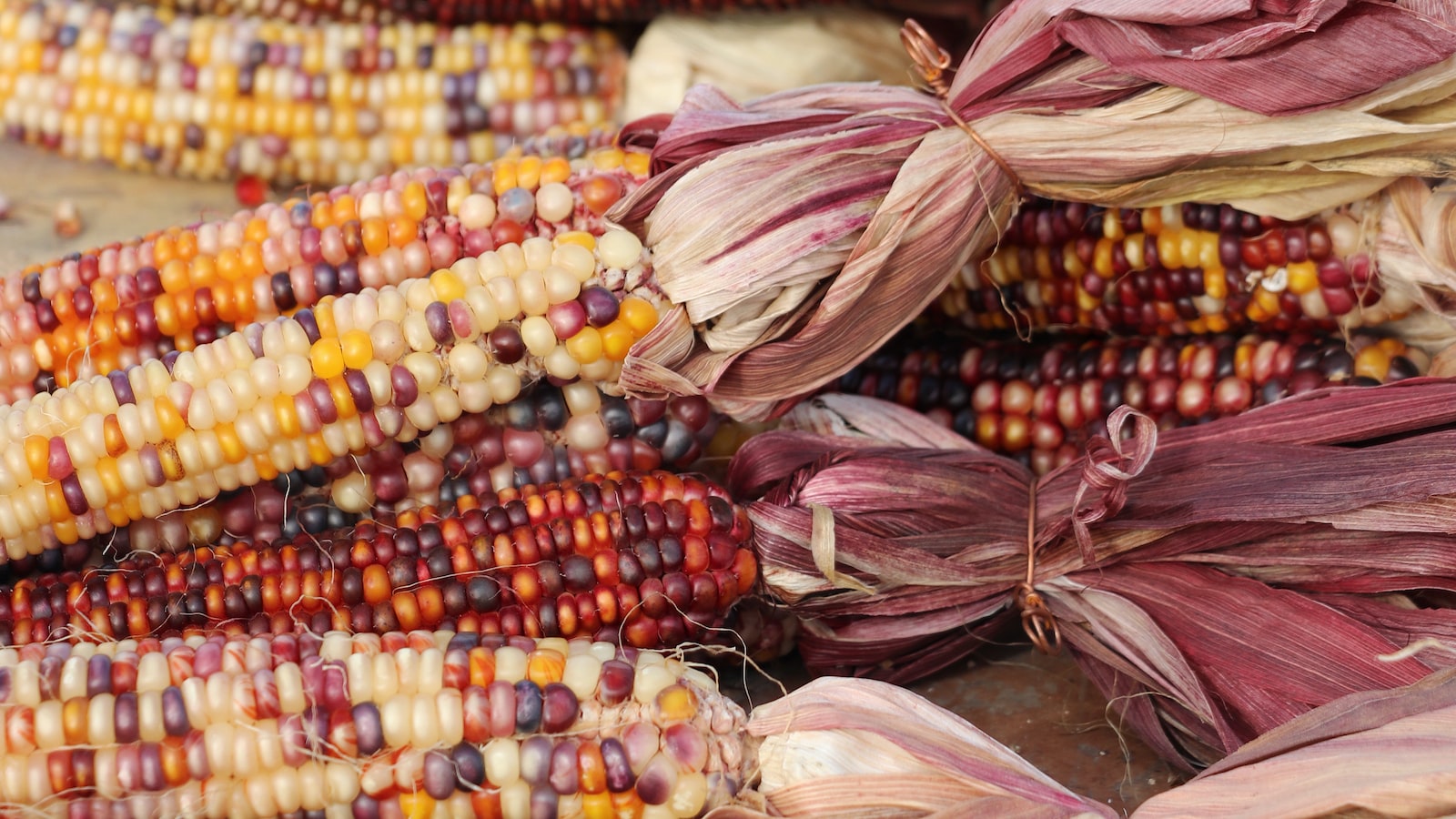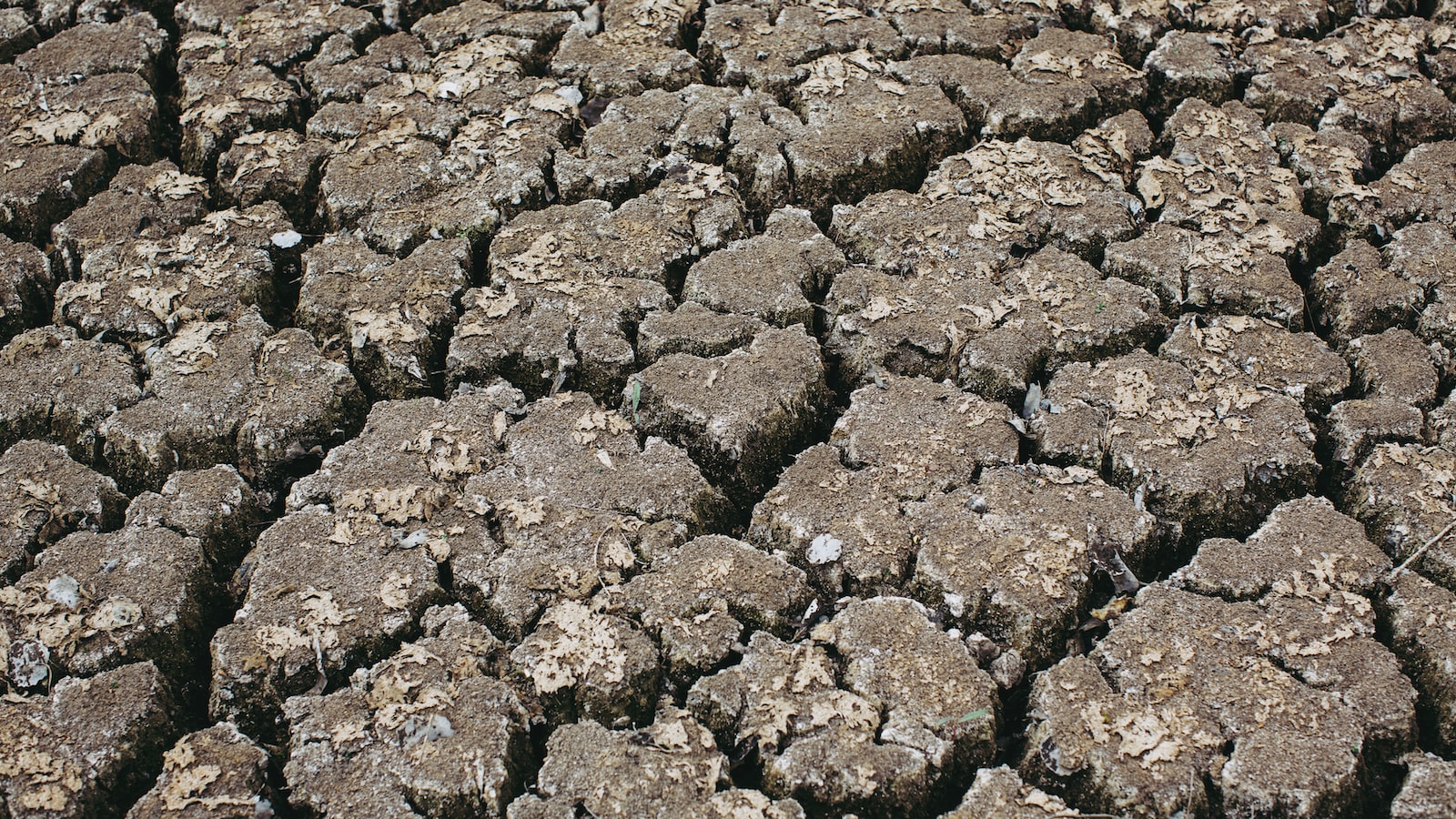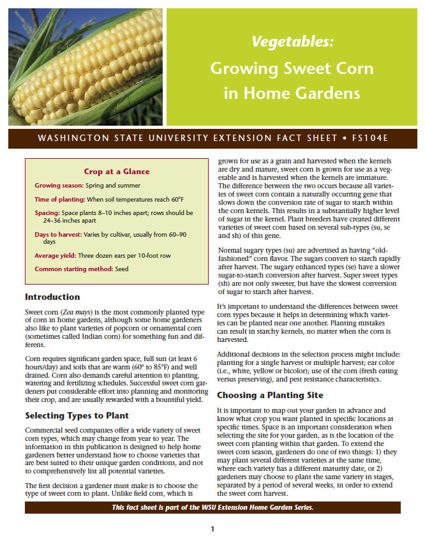In the emerald embrace of Washington state, where lush green landscapes and towering mountains collide, lies an agricultural tapestry painted with unparalleled diversity. Amongst the crop symphony, corn stands tall as one of the most beloved staples of local farmers and horticulture enthusiasts alike. But as the seasons mystically change, so does the opportune moment to sow the seeds of this golden grain. Overcome by a cornucopia of questions, we embark on a journey to demystify the enigma of when to plant corn in the captivating and evergreen lands of Washington state. From the fruitful valleys of Yakima to the rain-kissed deltas of Puget Sound, let us unearth the secrets and shed light upon the optimal timing for unleashing the vibrancy of corn in the unique agricultural oasis of the Pacific Northwest. Grab your gardening gloves, for the riddle of planting corn in Washington state is about to be cracked!
Planting Corn in Washington State: A Comprehensive Guide
When to Plant Corn in Washington State
Planting corn in Washington state requires careful consideration of the region’s unique climate and growing conditions. To ensure a successful corn crop, it is vital to understand the optimal timing for planting. The weather patterns and temperature variations across the state can greatly impact the growth and development of corn.
In Washington, it is generally recommended to plant corn in late April to mid-May when soil temperatures have reached around 50°F (10°C) or higher. However, the exact timing can vary depending on your specific location within the state. It is crucial to monitor the local weather forecasts and soil conditions to determine the ideal planting window. Additionally, choosing the right corn variety for your area is essential, as some cultivars are better suited for colder climates than others.
| Features | Tips |
|---|---|
| Choosing the right variety: | – Opt for corn varieties known for their adaptability to the Pacific Northwest climate. – Consider factors such as days to maturity and disease resistance when selecting a variety. |
| Soil preparation: | – Ensure the soil is well-drained and fertile by incorporating organic matter before planting. – Perform soil testing to determine necessary amendments for optimum corn growth. |
| Proper spacing and depth: | – Space corn plants adequately to allow sufficient air circulation and prevent overcrowding. – Plant seeds at a depth of 1-1.5 inches (2.5-3.8 cm) for optimal germination. |

Understanding the Ideal Soil and Climate Conditions for Corn Cultivation in Washington
Washington State provides unique soil and climate conditions that favor successful corn cultivation. To ensure optimal growth and harvest, it is essential to understand the ideal planting time for corn in this region.
Typically, corn planting in Washington begins between late April and mid-May, when soil temperatures have reached around 50 to 55 degrees Fahrenheit. Planting during this period allows for the establishment of strong root systems and ensures good germination rates. It is important to consider weather patterns and soil moisture content before planting, as excessively wet or cold conditions can hinder germination and development.
| Features | Tips |
|---|---|
| 1. Soil Type | Choose well-drained soil with a pH level between 5.8 and 7.0 for optimal corn growth. |
| 2. Fertilization | Ensure sufficient nutrient levels by applying a balanced fertilizer before planting corn. |
| 3. Irrigation | Maintain adequate soil moisture throughout the growing season to promote healthy corn growth. |
Additionally, it is beneficial to be aware of the corn variety best suited for Washington’s climate. Selecting hybrid or short-season corn varieties can help maximize yield potential and ensure a successful harvest within the region’s shorter growing season.
By and adhering to appropriate planting practices, farmers and gardeners alike can enjoy a bountiful corn harvest that thrives in the unique environment of the state.

Determining the Optimal Time Frame for Corn Planting in Different Regions of Washington State
Corn is an incredibly versatile crop that can thrive in Washington State’s diverse agricultural landscape. However, determining the optimal time frame for corn planting varies across different regions, as each possesses unique climate conditions. While understanding this information can significantly impact the success of your corn crop, there are a few general guidelines to consider when deciding when to plant corn in Washington State.
1. Consider the average last frost date: The last frost date is a vital factor to determine when it is safe to plant corn. In eastern parts of Washington State, where the growing season is shorter, it is recommended to wait until after the last frost to avoid any potential damage to young corn seedlings.
2. Evaluate soil temperature: Corn thrives in soil temperatures between 50°F and 86°F. It is crucial to monitor the soil temperature to ensure optimal conditions for germination and growth. Planting too early in cold soil can result in poor seed emergence, while planting in overly warm soil may impede root development.
| Region | Optimal Planting Time | Additional Tips |
|---|---|---|
| Western Washington | April to May | Choose suitable corn varieties with shorter maturity periods due to the region’s cooler and damper climate. |
| Eastern Washington | May to June | Consider heat-tolerant corn varieties and provide adequate irrigation during the dry summer months. |
| Central Washington | April to May | Ensure proper soil preparation and drainage due to the region’s sandy soils. |
These are general suggestions, and it is essential to consult local experts or experienced farmers from your specific region to determine the optimal planting time for corn. By considering the average last frost date, monitoring soil temperature, and understanding regional conditions, you can make informed decisions to maximize your corn crop yield in Washington State.

Expert Tips and Best Practices for Successful Corn Planting in Washington
Optimal Planting Time:
Planting corn in Washington state requires careful consideration of the weather and soil conditions. The ideal time to plant corn here is typically between late April and early May. This ensures that the soil has warmed adequately and frost is no longer a concern. However, it is crucial to monitor the forecast and soil temperature regularly, as the timing may vary slightly depending on the specific region within Washington. For successful corn planting, soil temperatures need to be consistently above 50 degrees Fahrenheit for at least a couple of consecutive days. Early planting can lead to stunted growth, while a delayed planting can reduce the overall yield potential.
Recommended Varieties:
Choosing the right corn variety is a crucial step towards successful planting. In Washington, it’s advisable to select corn hybrids with shorter relative maturity dates. Varieties that mature in 80 to 95 days are well-suited for this region. Some popular varieties that have proven to perform well in Washington state include ‘Sweet Painted Mountain,’ ‘Early Sunglow,’ and ‘Buttergold.’ These hybrids exhibit good disease resistance, tolerance to cooler temperatures, and are known for their reliable yields. Additionally, it is essential to consider factors such as soil type, local climate, and personal preference when selecting the corn variety.
| Features | Tips |
|---|---|
| Soil Preparation |
– Conduct a soil test to assess nutrient levels – Ensure well-drained soil with a pH between 6 and 7.5 – Incorporate organic matter to improve soil structure and fertility |
| Planting Depth |
– Plant corn seeds 1.5 to 2 inches deep – Avoid planting too shallow or too deep, as it affects germination – Ensure proper seed-to-soil contact for uniform emergence |
| Spacing |
– Plant seeds in rows spaced 30 to 36 inches apart – Maintain a distance of 8 to 12 inches between individual plants – Optimal plant population varies based on the chosen corn variety |
Frequently Asked Questions
Q: Why should I wait until the soil temperature is warm to plant corn in Washington State?
A: Waiting for warm soil temperatures ensures optimal germination and growth for corn plants. Just like humans, corn seeds require a cozy and nurturing environment to sprout successfully. Planting when the soil is warm guarantees that the seeds will receive the right conditions for rapid growth and development.
Q: Can I start planting corn as soon as spring arrives in Washington State?
A: While it is tempting to start planting corn as soon as the frost subsides, it’s essential to remember that corn is a warm-season crop. As Washington State experiences a wide range of microclimates, it is essential to consider your specific region and soil conditions. To maximize your corn crop yield, it’s crucial to wait until the soil is reliably warm, typically when the average temperature is consistently above 50°F (10°C) during the day and does not dip below 40°F (4°C) at night.
Q: What is the risk of planting corn too early in Washington State?
A: Planting corn when the soil is too cold risks stunting or even killing the seeds, resulting in poor germination rates and a diminished harvest. Additionally, early planting may expose the delicate corn plants to frost or sudden temperature drops, leading to potential damage or death. Remember, patience is key when it comes to growing a successful corn crop in Washington State! As the sun dips below the western horizon, casting a warm glow upon the fertile soil of Washington State, we bid farewell to our journey into the depths of corn planting. The secrets have been unveiled, the wisdom shared, and the time to reflect upon our newfound knowledge has arrived.
With each passing word, we have delved into the intricacies of nature’s rhythm and the artistry of the golden grain. We have learned that the soil, so resilient and rich, holds the key to success, as it cradles the seeds of tomorrow.
Amidst the gentle rustling of leaves and the whispered conversations between breeze and stalk, we have witnessed the delicate ballet of timing. In the enchanting land of Washington State, the confluence of elements manifests itself in the perfect moment for corn planting to commence.
As we bid adieu to this enlightening voyage, we leave you, dear reader, armed with the knowledge that planting corn in the Evergreen State is not merely an act of sowing seeds, but a dance with nature itself. It is a delicate balance of understanding the warmth of the nurturing soil, the glory of sun-kissed days, and the secret language of the seasons.
Yet, let us not forget that our journey does not truly end here. For as the days grow longer and the winds whisper tales of growth and prosperity, we must remain vigilant. We must attend to our young cornstalks, as they reach towards the heavens, yearning to provide us with sustenance and delight.
So, as we bid you adieu, we implore you to embark upon your own expedition into the fertile lands of Washington State. Listen to the whispers of the earth, feel the pulse of the sun, and dance to the rhythm of the seasons. Together, we shall embrace the gift of corn planting and reap the bountiful rewards, for such is the cosmic poetry of nature and our humble role within it.
With that, we raise our hands to the skies and bid you farewell, hoping that your ventures into corn planting flourish and thrive. Until we meet again, dear reader, may your fields be abundant and your cornstalks sway gracefully in the gentle Washington breeze.
- When to Put Weed and Feed on Lawn in Michigan - October 16, 2023
- When to Fertilize Potatoes Plants - October 16, 2023
- Can You Plant Clover in the Spring - October 16, 2023
Contents
- 1 Planting Corn in Washington State: A Comprehensive Guide
- 2 When to Plant Corn in Washington State
- 3 Understanding the Ideal Soil and Climate Conditions for Corn Cultivation in Washington
- 4 Determining the Optimal Time Frame for Corn Planting in Different Regions of Washington State
- 5 Expert Tips and Best Practices for Successful Corn Planting in Washington
- 6
- 7 Frequently Asked Questions

